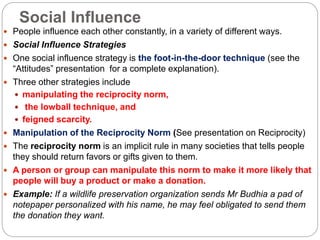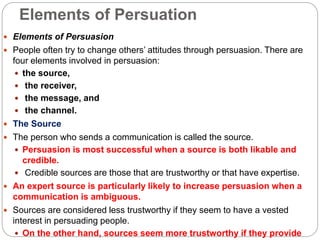The document discusses various social influence strategies, including the foot-in-the-door technique, manipulation of the reciprocity norm, the lowball technique, and feigned scarcity, with real-life examples. It also outlines the four key elements of persuasion: the source, the receiver, the message, and the channel, and explains how these can affect the effectiveness of persuasive communication. Additionally, it addresses coercive persuasion and the tactics used by groups such as cults to manipulate individuals.






